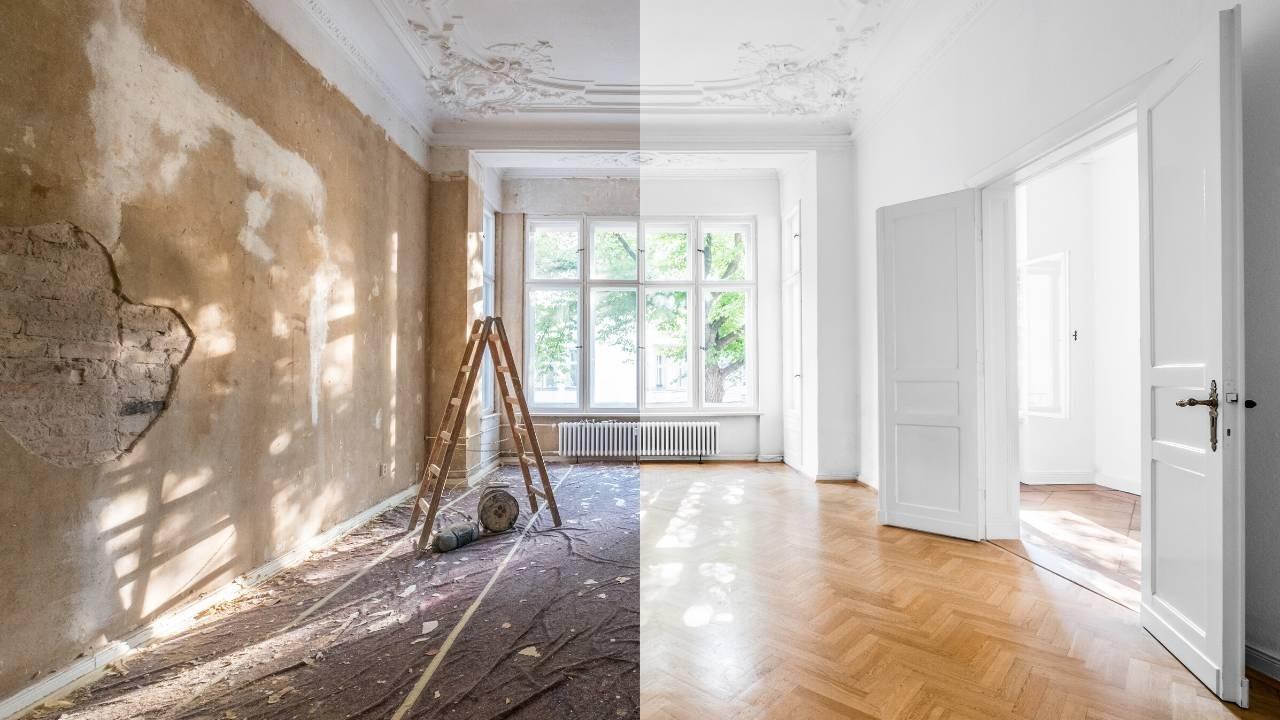Refurb and flip

Many property investors focus on buying property, adding value by refurbing and then reselling or refinancing as a buy-to-let. It’s the core of most property investment.
Of course, there are many other strategies, but let’s look at how you make finance a refurb and flip effectively.
1: Find a suitable property
This might be a property with a motivated buyer where you can negotiate a deal below market value. This will benefit you in reducing the amount of capital you will have to invest.
2: Calculate refurb costs
It’s important to do this exercise carefully - no guesstimates. The refurb needs to improve the value of the property too or you’ll lose money on the deal, especially if you plan to resell right after refurb.
Getting your money out and repaying your loan should leave you with a healthy profit. Work out what you want to make on the deal, then work out exactly what your refurb will cost. When you’ve got these figures you should be able to work out if the deal is worth doing.
3: Apply for a bridging loan
If you choose the right bridger (or have an experienced broker), you can get a bridging loan for 75% of the actual market value. If you’ve negotiated a BMV deal, this reduces the amount of your investment.
For example: the property’s market value is £200K, your actual deal is for £180K. Providing the bridging company’s surveyor agrees that the property is worth £200K, the bridging loan will be 75% of £200K (£150K), leaving you with only £30K to invest.
Most lenders will only lend against actual price paid, so if you paid £180K, you would only get a loan for £126K.
4: Getting refurbishment finance
If your available cash won’t cover refurb costs then you can apply for bridging for refurb too. There are bridgers who will cover refurb costs, but they normally do this in arrears. This means you’ll need to have cash at least for the first stage of refurb. The bridger will then look at the property and revalue. If the refurb has raised the value beyond their original valuation, they will release more cash - up to a total of 70% of the new value - less what they’ve already loaned.
For example: if your property, originally valued at £200K, with some refurb done is now valued at £220K, your bridger will be happy to release up to 70% of £220K. So if you’ve already had £140K, you can get a further £14K (£220K x 70% = £154K minus £140K that you’ve already had).
There are refurbishment bridging loans, but these are very specialist products and most will cover 100% of the refurb, but still only 70% of the purchase price of the property. These are generally based on the bridger being satisfied that the refurbishment will add sufficient value to the property.
WARNING: Don’t underestimate the time you’ll need the loan for. If you do, you’ll lose some of your profit in additional interest payments. If you finish early, there are no penalties and you can get unused interest back. Remember that, if you’re selling, you’ll need to find a buyer quickly enough to repay your bridge. If you’re remortgaging you have to get your mortgage in place and all the legal stuff done.
If you need help, we’ve brokered hundreds of bridges over the past few years.
You can learn more by:
- Attending an upcoming webinar - register here
- Booking into a LIVE! 3-day workshop - book your ticket here
- Get instant access to the full programme with the online training - click here for more information




